 W
WThe Angolan Civil War was a civil war in Angola, beginning in 1975 and continuing, with interludes, until 2002. The war began immediately after Angola became independent from Portugal in November 1975. The war was a power struggle between two former anti-colonial guerrilla movements, the communist People's Movement for the Liberation of Angola (MPLA) and the anti-communist National Union for the Total Independence of Angola (UNITA). The war was used as a surrogate battleground for the Cold War by rival states such as the Soviet Union, Cuba, South Africa and the United States.
 W
WAntonianism, or Antonine sect, was a syncretic Bakongo Catholic movement formed in the Kingdom of Kongo between 1704 and 1708 as a development out of the Roman Catholic Church in Kongo, yet without denying the authority of the Pope. Its founder was a young charismatic woman named Beatriz Kimpa Vita who said she was possessed by Saint Anthony of Padua. Beatriz became known for healing and other miracles. It was eventually suppressed by King Pedro IV of Kongo, and Dona Beatriz was burned at the stake as a heretic.
 W
WThe Army for the Liberation of Rwanda was a rebel group largely composed of members of the Interahamwe and Armed Forces of Rwanda. Operating mostly in the eastern regions of the Democratic Republic of the Congo along the border with Rwanda, it carried out attacks throughout the Second Congo War against forces aligned with Rwanda and Uganda. In 2000, the ALiR agreed to merge with the Hutu resistance movement based in Kinshasa into the new Democratic Forces for the Liberation of Rwanda (FDLR). ALiR was largely supplanted by the FDLR by 2001.
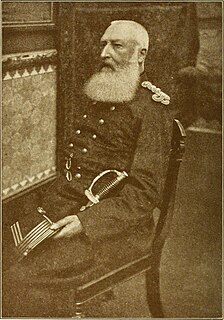 W
WIn the period from 1885 to 1908, many well-documented atrocities were perpetrated in the Congo Free State which, at the time, was a colony under the personal rule of King Leopold II of the Belgians. These atrocities were particularly associated with the labour policies used to collect natural rubber for export. Together with epidemic disease, famine, and a falling birth rate caused by these disruptions, the atrocities contributed to a sharp decline in the Congolese population. The magnitude of the population fall over the period is disputed, with modern estimates ranging from 1 million to 15 million deaths.
 W
WThe Belgian Congo was a Belgian colony in Central Africa from 1908 until independence in 1960. The former colony adopted its present name, the Democratic Republic of the Congo (DRC), in 1964.
 W
WThe Belgo-Congolese Round Table Conference was a meeting organized in two parts in 1960 in Brussels between on the one side representatives of the Congolese political class and chiefs and on the other side Belgian political and business leaders. The round table meetings led to the adoption of sixteen resolutions on the future of the Belgian Congo and its institutional reforms. With a broad consensus, the date for independence was set on June 30, 1960.
 W
WOmer Bodson was the Belgian officer who shot and killed Msiri, King of Garanganze (Katanga) on 20 December 1891 at Bunkeya in what is now the DR Congo. Bodson was then killed by one of Msiri's men.
 W
WCiments du Katanga is a company in the Democratic Republic of the Congo that makes cement and related products. It was established during the copper boom of the early 1920s to supply the new mining and refining companies, including worker housing and industrial construction.
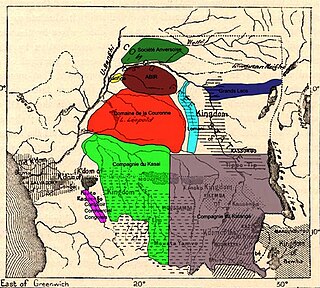 W
WThe Grands Lacs Company was a concession company of the Congo Free State.
 W
WThe Comptoir Commercial Congolais was a concession company of the Congo Free State, which was in personal union with Leopold II of Belgium.
 W
WThe Congo Free State, also known as the Independent State of the Congo, was a large state in Central Africa from 1885 to 1908. It was privately owned by Leopold II of Belgium. Leopold was able to procure the region by convincing other Eurasian states at the Berlin Conference on Africa that he was involved in humanitarian and philanthropic work and would not tax trade. Via the International Association of the Congo, he was able to lay claim to most of the Congo basin. On 29 May 1885, after the closure of the Berlin Conference, the king announced that he planned to name his possessions "the Congo Free State", an appellation which was not yet used at the Berlin Conference and which officially replaced "International Association of the Congo" on 1 August 1885. The Congo Free State operated as a separate nation from Belgium, in a personal union with its King, privately controlled by Leopold II, although he never personally visited the state.
 W
WThe Congo Free State propaganda war was a worldwide media propaganda campaign waged by both King Leopold II of Belgium and the critics of the Congo Free State. Leopold was very astute in using the media to support his virtual private control of the Congo. British campaigner Edmund Dene Morel successfully campaigned against Leopold and focused public attention on the violence of Leopold's rule. Morel used newspaper accounts, pamphlets, and books to publish evidence from reports, eye-witness testimony, and pictures from missionaries and others involved directly in the Congo. As Morel gained high-profile supporters, the publicity generated by his campaign eventually forced Leopold to relinquish control of the Congo to the Belgian government.
 W
WThe Congo Pedicle is the southeast salient of the Katanga Province of the Democratic Republic of Congo, which divides neighbouring Zambia into two lobes. In area, the pedicle is similar in size to Wales or New Jersey. 'Pedicle' is used in the sense of 'a little foot'. 'Congo Pedicle' or 'the Pedicle' is also used to refer to the Congo Pedicle road which crosses it.
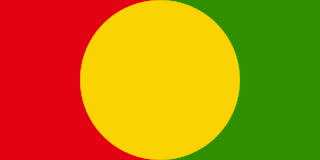 W
WThe Democratic Forces for the Liberation of Rwanda is an armed rebel group active in the eastern Democratic Republic of the Congo. An ethnic Hutu group opposed to the ethnic Tutsi influence, the FDLR is one of the last factions of Rwandan rebels active in the Congo. It was founded through an amalgamation of other groups of Rwandan refugees in September 2000, including the former Army for the Liberation of Rwanda (ALiR), under the leadership of Paul Rwarakabije. It was active during the latter phases of the Second Congo War and the subsequent insurgencies in Kivu.
 W
WMaria de Fonseca was the great wife of Msiri, the powerful warrior-king of Katanga, at the time when the Stairs Expedition arrived in 1891 to take possession of the territory for the Belgian King Leopold II, with or without Msiri's consent.
 W
WThe Société internationale forestière et minière du Congo, known as Forminière, was a lumber and mining company in the Belgian Congo. Founded by Jean Jadot in 1906, the company began diamond mining in Kasai in 1913. At its height, Forminière was involved in gold and silver mining, cotton, palm and rubber cultivation, farming, sawmilling and even owned shops. The Belgian colonial state co-owned 50 percent of the company's capital, the rest being held largely by American shareholders.
 W
WThe Free Republic of the Congo, often referred to as Congo-Stanleyville, was a short-lived rival government to the Republic of the Congo (Congo-Léopoldville) based in the eastern Congo and led by Antoine Gizenga.
 W
WThe history of the Jews in the Democratic Republic of the Congo can be traced back to 1907, when the first Jewish immigrants began to arrive in the country. Current Jewish Congolese population is mostly of Sephardi background.
 W
WThe Katangese Air Force, also known as Katangese Military Aviation, was a short-lived air force of the State of Katanga (1960–63) which seceded from the Republic of the Congo during the Congo Crisis. It was made up of mercenary personnel of Belgian, British, French, Polish and South African nationality.
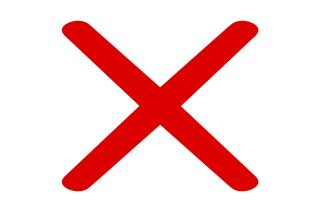 W
WThe Kingdom of Kongo was a kingdom located in central Africa in present-day northern Angola, the western portion of the Democratic Republic of the Congo, the Republic of the Congo as well as the southernmost part of Gabon. At its greatest extent it reached from the Atlantic Ocean in the west to the Kwango River in the east, and from the Congo River in the north to the Kwanza River in the south. The kingdom consisted of several core provinces ruled by the Manikongo, the Portuguese version of the Kongo title Mwene Kongo, meaning "lord or ruler of the Kongo kingdom", but its sphere of influence extended to neighbouring kingdoms, such as Ngoyo, Kakongo, Loango, Ndongo and Matamba, the latter two located in what is Angola today.
 W
WColonel Henry I. Kowalsky was a notable San Francisco defense attorney. Notably, he was employed by King Leopold II of Belgium as a lobbyist to the US government in favor of the Congo Free State. Kowalsky was known as "Colonel" without having ever been in the military. He earned the designation when he was appointed to, and served as, the Judge Advocate General for California Governor Robert Waterman.
 W
WThe Republic of the Congo was a sovereign state in Central Africa, created with the independence of the Belgian Congo in 1960. From 1960 to 1966, the country was also known as Congo-Léopoldville to distinguish it from its northwestern neighbor, also called the Republic of the Congo, likewise known as Congo-Brazzaville. In 1964, the state's official name was changed to the Democratic Republic of the Congo, but the two countries continued to be distinguished by their capitals; with the renaming of Léopoldville as Kinshasa in 1966, it became also known as Congo-Kinshasa. After Joseph Désiré Mobutu, commander-in-chief of the national army, seized control of the country, it became the Republic of Zaire in 1971. It would again become the Democratic Republic of the Congo in 1997. The period between 1960 and 1965 is referred to as the First Congolese Republic.
 W
WThe Kingdom of Loango was a pre-colonial African state, during approximately the 16th to 19th centuries in what is now the western part of the Republic of the Congo, Southern Gabon and Cabinda. Situated to the north of the more powerful Kingdom of Kongo, at its height in the 17th century Loango influence extended from Cape St Catherine in the north to almost the mouth of the Congo River.
 W
WThe Lomani Company was a concession company of the Congo Free State. In the colonial era, the Lomami Company forced the people of the Lomami River region from Opala and Lokilo down to Ilambi to collect large amounts of rubber. The Mbole people of the region vividly described their view of the effect of this work with the phrase wando wo limolo, meaning "tax-caused loss of weight".
 W
WThe Kingdom of Luba or Luba Empire (1585–1889) was a pre-colonial Central African state that arose in the marshy grasslands of the Upemba Depression in what is now southern Democratic Republic of Congo.
 W
WThe Lulonga Company was a concession company of the Congo Free State. It was, with the Société Anversoise and the Abir Congo Company, one of the main producers of rubber in the Free State. The company's rubber production declined in the early 20th century as a result of over harvesting of the natural rubber vine and the entire concession produced just seven tons of rubber in 1905. Like Abir and the Société Anversoise, the Lulonga Company handed back control of the concession to the Congo Free State in 1906.
 W
WThe term Mayi-Mayi or Mai-Mai refers to any kind of community-based militia group active in the Democratic Republic of the Congo (DRC) that is formed to defend local territory against other armed groups. Most were formed to resist the invasion of Rwandan forces and Rwanda-affiliated Congolese rebel groups, but some may have formed to exploit the war to their own advantage by looting, cattle rustling or banditry.
 W
WThe United Nations Organization Stabilization Mission in the Democratic Republic of the Congo or MONUSCO, an acronym based on its French name, is a United Nations peacekeeping force in the Democratic Republic of the Congo (DRC) which was established by the United Nations Security Council in resolutions 1279 (1999) and 1291 (2000) of the United Nations Security Council to monitor the peace process of the Second Congo War, though much of its focus subsequently turned to the Ituri conflict, the Kivu conflict and the Dongo conflict. The mission was known as the United Nations Mission in the Democratic Republic of Congo or MONUC, an acronym of its French name Mission de l'Organisation des Nations Unies en République démocratique du Congo, until 2010.
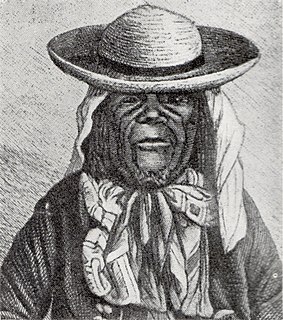 W
WMsiri founded and ruled the Yeke Kingdom in south-east Katanga from about 1856 to 1891. His name is sometimes spelled 'M'Siri' in articles in French. Other variants are "Mziri", "Msidi", and "Mushidi"; and his full name was Mwenda Msiri Ngelengwa Shitambi.
 W
WThe National Congress for the Defence of the People is a political armed militia established by Laurent Nkunda in the Kivu region of the Democratic Republic of the Congo in December 2006. The CNDP was engaged in the Kivu conflict, an armed conflict against the military of the Democratic Republic of the Congo. In January 2009, the CNDP split and Nkunda was arrested by the Rwanda government. The remaining CNDP splinter faction, led by Bosco Ntaganda, was planned to be integrated into the national army.
 W
WCongolese nationalism in the Democratic Republic of the Congo was also for a time known as Zairian nationalism during the rule of Mobutu Sese Seko. Congolese nationalism persists among the people of the Democratic Republic of the Congo, in spite of civil war and the lack of a clear definition of what it means to be Congolese.
 W
WNgoyo was an Iron Age kingdom state of the Woyo tribe, located in the south of Cabinda. Located on the Atlantic coast of Central Africa, just north of the Congo River, it was founded by Bantu-speaking people around the 15th century. Ngoyo tradition held that the kingdom's ancestors were among the earliest settlers in the area, leading their chiefs to title themselves the nfumu nsi. The capital was Mbanza Ngoyo. By 1700, Cabinda had become the leading slave port north of Luanda, and Ngoyo's economy rested heavily on the sale of slaves.
 W
WMuhammad bin Khalfan bin Khamis al-Barwani, commonly known as Rumaliza, was an Arab trader of slaves and ivory active in Central and East Africa in the last part of the nineteenth century. He was a member of the Arabian Barwani tribe. With the help of Tippu Tip he became Sultan of Ujiji. At one time he dominated the trade of Tanganyika, before being defeated by Belgian forces under Baron Francis Dhanis in January 1894.
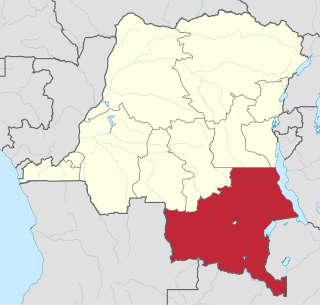 W
WShaba II was a brief conflict fought in the Zairean province of Shaba in 1978. The conflict broke out on 11 May 1978 after 6,500 rebels from the Congolese National Liberation Front (FNLC), a Katangese separatist militia, crossed the border from Angola into Zaire in an attempt to achieve the province's secession from the Zairian regime of Mobutu Sese Seko. The FNLC captured the important mining town of Kolwezi.
 W
WThe Société Anversoise was a concession company of the Congo Free State, headquartered in Antwerp. It was, with the Lulonga Company and the Abir Congo Company, one of the main producers of rubber in the Free State. Alongside Abir and the Lulonga Company the Société Anversoise handed back control of the concession to the Congo Free State in 1906. The Société Anversoise merged with Abir in 1911 to form the Compagnie du Congo Belge with a focus of the management of rubber plantations instead of the harvesting of naturally occurring rubber. The Société Anversoise was quoted on the Antwerp Stock Exchange from 27 July 1898.
 W
WSouth Kasai was an unrecognised secessionist state within the Republic of the Congo which was semi-independent between 1960 and 1962. Initially proposed as only a province, South Kasai sought full autonomy in similar circumstances to the much larger neighbouring state of Katanga, to its south, during the political turmoil arising from the independence of the Belgian Congo known as the Congo Crisis. Unlike Katanga, however, South Kasai did not explicitly declare full independence from the Republic of the Congo or reject Congolese sovereignty.
 W
WThe Union Minière du Haut-Katanga, often abbreviated to Union Minière or UMHK, was an Anglo-Belgian mining company which operated in the copperbelt in the modern-day Democratic Republic of the Congo between 1906 and 1966.
 W
WThe United Nations Operation in the Congo was a peacekeeping force established by the United Nations to maintain order in the Republic of the Congo on 14 July 1960 amid the Congo Crisis. ONUC was the UN's first peacekeeping mission with significant military capabilities. It was withdrawn in 1964.
 W
WDona Beatriz Kimpa Vita, Kimpa Mvita or Tchimpa Vita, was a Kongo Empire prophet and leader of her own Christian movement, Antonianism, this movement taught that Jesus and other early Christian figures were from the Kongo Empire. The name "Dona" indicates that she was born into a family of high Kongolese nobility; she was later given the name "Beatriz" after the Catholic Saint. Her teaching grew out of the traditions of the Roman Catholic Church in Kongo, and caused her to upbraid the Catholic priests for not believing as she did. Dona Beatriz believed the teachings of St. Anthony and used this claim to attempt to restore the ideal of Kongo as a unified Christian Kingdom. Kimpa Vita is seen as an antislavery figure and is known as a prefigure to modern African democracy movements. While the role of Dona Beatriz Kimpa Vita is widely overlooked, the years of her movement are some of the best documented in Kongo's history.
 W
WThe involvement of the Belgian Congo in World War II began with the German invasion of Belgium in May 1940. Despite Belgium's surrender, the Congo remained in the conflict on the Allied side, administered by the Belgian government in exile.